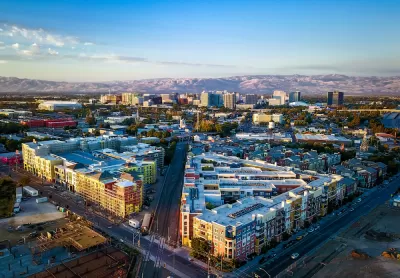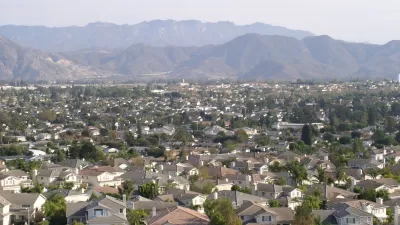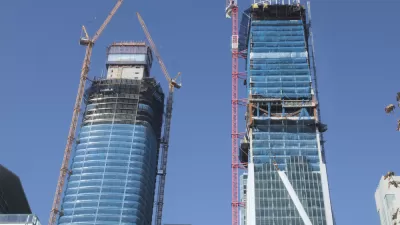A $450 million bond referendum will come before San Jose voters this November. Mayor Sam Liccardo promises it is "a necessary but not sufficient tool" to provide stable housing at an epicenter of the housing crisis.

Following the 2016 approval of a $950 million bond to address the housing crisis in Santa Clara County, the voters of San Jose will be asked to approve another $450 million this year. The bond will direct money "to affordable housing production and preservation at three different income levels, promising to create up to 3,550 units of new affordable housing in the city," Jared Brey writes.
San Jose's mayor Sam Liccardo characterizes the bond as "a necessary but not sufficient tool" to deal with the city's severe lack of affordable housing options. "Last October, Liccardo released a 15-point housing plan with the goal of creating 25,000 new homes in San Jose over the next five years, of which 10,000 would be affordable units." The bond is estimated to cost San Jose property owners 8 cents per $1,000 of assessed value, and will require approval by two thirds of voters.
The city is also working to create a separate fund to attract low-return, safe investments in housing for the middle class, a so-called "missing middle" fund. Such an instrument would pair private and philanthropic investment with a small subsidy from the city, but so far no outside money has been committed.
FULL STORY: The ‘Capital of Silicon Valley’ Wants to Borrow $450 Million for Housing

Americans May Be Stuck — But Why?
Americans are moving a lot less than they once did, and that is a problem. While Yoni Applebaum, in his highly-publicized article Stuck, gets the reasons badly wrong, it's still important to ask: why are we moving so much less than before?

Using Old Oil and Gas Wells for Green Energy Storage
Penn State researchers have found that repurposing abandoned oil and gas wells for geothermal-assisted compressed-air energy storage can boost efficiency, reduce environmental risks, and support clean energy and job transitions.

Placekeeping: Setting a New Precedent for City Planners
How a preservation-based approach to redevelopment and urban design can prevent displacement and honor legacy communities.

San Francisco’s Muni Ridership Grew in 2024
The system saw its highest ridership since before the Covid-19 pandemic, but faces a severe budget shortage in the coming year.

Colorado Lawmakers Move to Protect BRT Funding
In the face of potential federal funding cuts, CDOT leaders reasserted their commitment to planned bus rapid transit projects.

Safe Streets Funding in Jeopardy
The Trump administration is specifically targeting bike infrastructure and other road safety projects in its funding cuts.
Urban Design for Planners 1: Software Tools
This six-course series explores essential urban design concepts using open source software and equips planners with the tools they need to participate fully in the urban design process.
Planning for Universal Design
Learn the tools for implementing Universal Design in planning regulations.
Heyer Gruel & Associates PA
City of Moreno Valley
Institute for Housing and Urban Development Studies (IHS)
City of Grandview
Harvard GSD Executive Education
Salt Lake City
NYU Wagner Graduate School of Public Service
City of Cambridge, Maryland





























